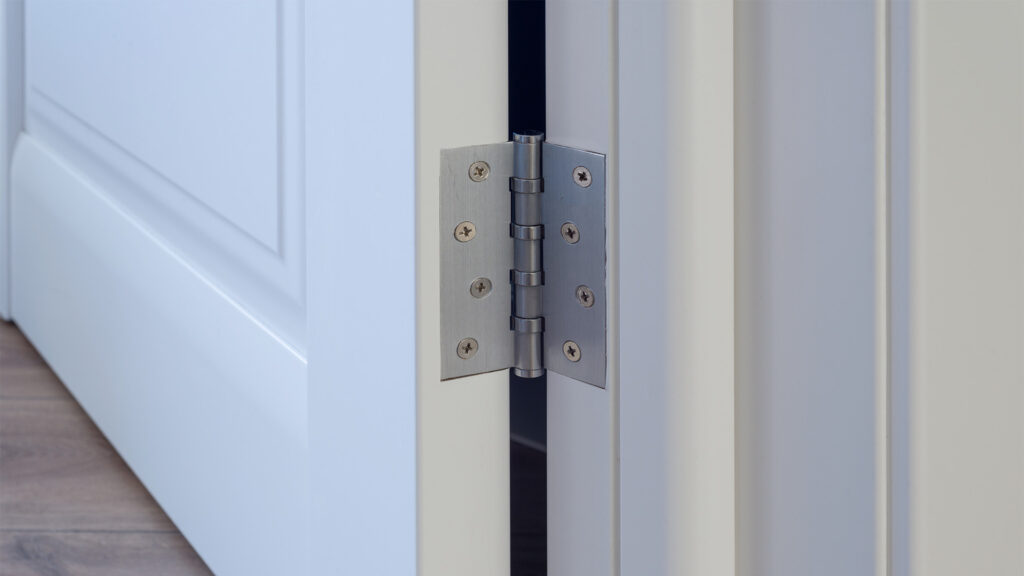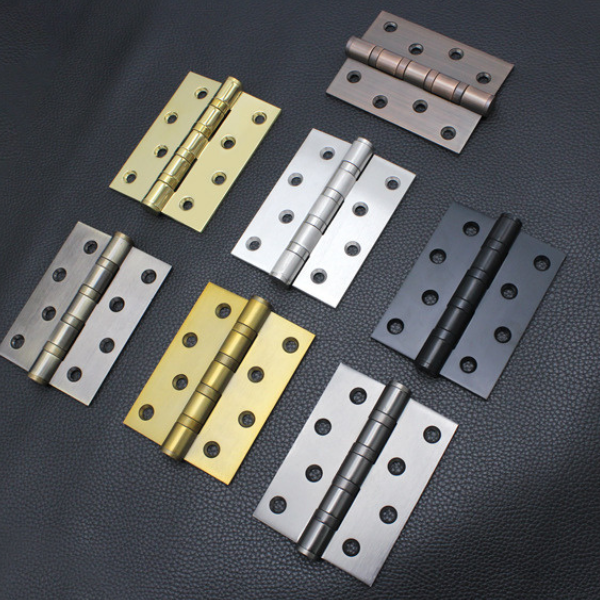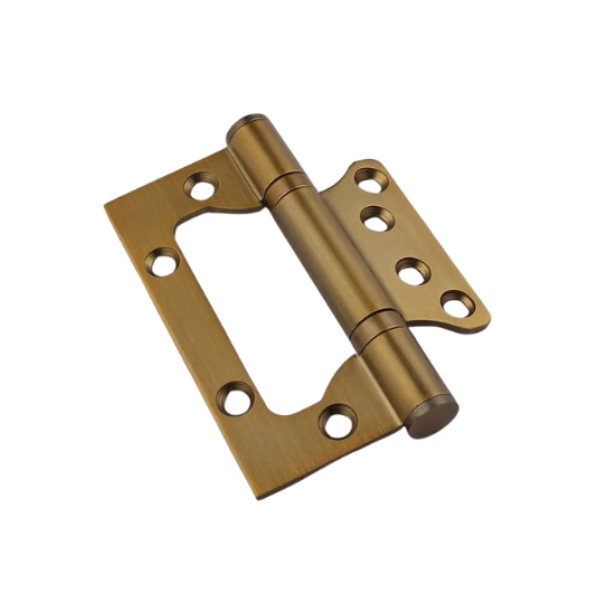Selecting the ideal hinge for your project depends on several factors, such as the type of door, the environment, and the specific functional needs of the application. Below are some common types of butt hinges and their characteristics to help you make an informed decision.
1. Standard Butt Hinge
A standard butt hinge is the most commonly used type and consists of two hinge blades, a central axis, and plugs at both ends of the central axis. High-quality butt hinges are usually made from SUS304 stainless steel, which provides excellent strength and resistance to corrosion. This type of hinge is widely used in a variety of settings, including residential homes, commercial buildings, hotels, hospitals, and schools.
Key features:
- Durability: Made of SUS304 stainless steel for high corrosion resistance.
- Versatility: Ideal for everyday residential and commercial applications.
- Affordability: Offers a cost-effective solution with good load-bearing capacity.
- Standardized Testing: Conforms to clear testing and quality standards.



2. Anti-Theft Butt Hinge
An anti-theft butt hinge is an enhanced version of the standard flat hinge. It incorporates anti-theft nails embedded in the hinge leaves. These nails secure the door to the frame even if the hinge itself is damaged. When the door is closed, the anti-theft feature prevents the door from being easily removed or tampered with, which is especially useful in high-security applications.
Key features:
- Increased Security: Anti-theft nails prevent the door from being removed even if the hinge is compromised.
- Ideal for Security Applications: Perfect for doors in areas requiring higher levels of security, such as commercial buildings or secure facilities.



3. Flag Hinge
Flag hinges are designed to allow for easy disassembly and assembly of the hinge leaves. This type of hinge is particularly beneficial for installations where tools may be scarce, or time is of the essence. Flag hinges are commonly used in steel doors, where installing the hinges at the site of installation can be difficult. These hinges are typically pre-installed in the door and frame during the manufacturing process, and at the installation site, workers only need to connect the two parts, eliminating the need for additional drilling or modifications.
Key features:
- Ease of Installation: Pre-installed hinges simplify the on-site assembly.
- Ideal for Steel Doors: Particularly suitable for steel doors, where hinge installation may be challenging.
- Time-Saving: Streamlines the installation process, especially when tools or time are limited.



4. Flush Hinge
Flush hinges are primarily used for residential doors. One of their biggest advantages is that they do not require grooves to be cut into the door leaf or frame during installation. These hinges can be directly fixed to the door and frame with screws, making them quick and easy to install, especially for lighter doors. Flush hinges are perfect for applications where aesthetic appeal and ease of installation are priorities.
Key features:
- No Grooves Needed: Simplifies installation by eliminating the need for cutting grooves.
- Suitable for Lighter Doors: Ideal for residential doors with moderate weight.
- Quick Installation: Can be installed quickly with just screws, reducing labor time.

5. Heavy Duty Butt Hinge
Heavy-duty butt hinges are designed for doors that require additional strength and support, such as steel fire doors found in public buildings like schools, hospitals, and large commercial facilities. These doors are much heavier than typical residential doors, and standard hinges may not be able to support their weight. Heavy-duty hinges can bear loads of more than 160kg and are specifically engineered to handle the stresses of high-traffic environments.
Key features:
- High Load-Bearing Capacity: Can support doors weighing over 160kg.
- Maintenance-Free: Does not require lubrication or regular maintenance, making them ideal for high-use areas.
- Long-Lasting: Designed to withstand the constant use typical of public buildings, minimizing the need for replacements.



Conclusion
Choosing the right SUS butt hinge involves understanding the specific needs of your project, from security concerns to load-bearing requirements. Whether you need a simple, cost-effective hinge for residential use or a heavy-duty solution for a high-traffic commercial setting, there is a butt hinge type suited to your needs. Consider factors like the door’s weight, material, and location to ensure the hinge you choose provides both durability and functionality.

